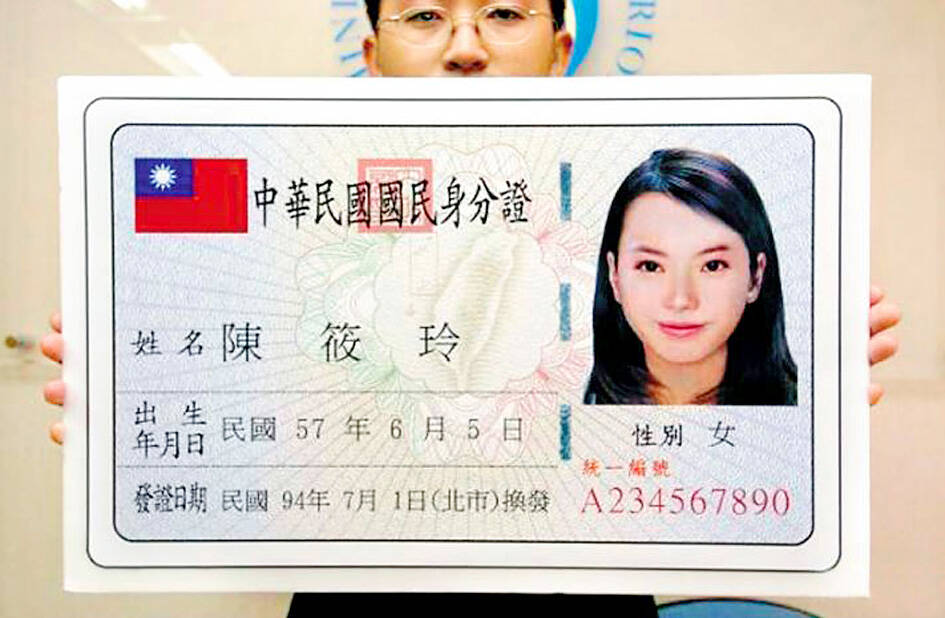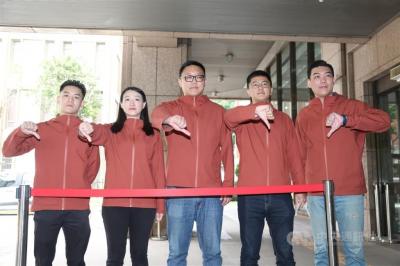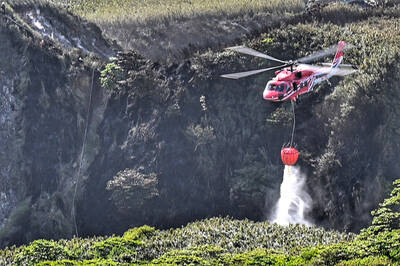The Ministry of the Interior has banned the use of mirror photos on national identification cards.
Taiwanese nationals were required to prepare a front-facing “half-body” color photo or digital photo taken within the past two years when applying for an identification card for the first time,
However, the ministry has since removed the term “half-body” in the updated regulation due to complaints regarding its vagueness.

Photo: Taipei Times
Published on Tuesday last week, the amended regulation on the formats and photos of national identification cards includes the stipulation that the length of the portrait from the top of the head to the bottom of the chin should be between 3.2cm and 3.6cm.
Composite photos and mirror photos — where the portrait’s left and right sides are reversed — are also prohibited, the regulation says.
It said that people should continue to use their original identification card number when restoring household registration, re-registering after canceling birth registration, and when being approved to reside domestically after canceling or abolishing initial household registration or restoring citizenship.
Those who re-register with different identities should be assigned a new identification card number, the updated regulation showed.
Those who are wanted, detained, or restricted from leaving the country in accordance with the Immigration Act (入出國及移民法) are banned from applying to change their national identification card numbers, it said.
The ban also applies to those who have been sentenced to a prison term and have not been declared eligible for probation or allowed to commute the sentence to a fine or community service, it said. The ban is valid for three years onward from the date of sentencing.
When same-sex married couples adopt their partner’s children through step-parent adoption or co-adopt children, the parents should not be marked as “adopted” on the children’s national identification cards, it said.

Taiwan is stepping up plans to create self-sufficient supply chains for combat drones and increase foreign orders from the US to counter China’s numerical superiority, a defense official said on Saturday. Commenting on condition of anonymity, the official said the nation’s armed forces are in agreement with US Admiral Samuel Paparo’s assessment that Taiwan’s military must be prepared to turn the nation’s waters into a “hellscape” for the Chinese People’s Liberation Army (PLA). Paparo, the commander of the US Indo-Pacific Command, reiterated the concept during a Congressional hearing in Washington on Wednesday. He first coined the term in a security conference last

Prosecutors today declined to say who was questioned regarding alleged forgery on petitions to recall Democratic Progressive Party (DPP) legislators, after Chinese-language media earlier reported that members of the Chinese Nationalist Party (KMT) Youth League were brought in for questioning. The Ministry of Justice Investigation Bureau confirmed that two people had been questioned, but did not disclose any further information about the ongoing investigation. KMT Youth League members Lee Hsiao-liang (李孝亮) and Liu Szu-yin (劉思吟) — who are leading the effort to recall DPP caucus chief executive Rosalia Wu (吳思瑤) and Legislator Wu Pei-yi (吳沛憶) — both posted on Facebook saying: “I

Sung Chien-liang (宋建樑), who led efforts to recall Democratic Progressive Party (DPP) Legislator Lee Kun-cheng (李坤城), was released on bail of NT$80,000 today amid outcry over his decision to wear a Nazi armband to questioning the night before. Sung arrived at the New Taipei District Prosecutors’ Office for questioning in a recall petition forgery case last night wearing a red armband bearing a swastika, carrying a copy of Adolf Hitler’s Mein Kampf and giving a Nazi salute. Sung left the building at 1:15am without the armband and covering the book with his coat. Lee said today that this is a serious

A mountain blaze that broke out yesterday morning in Yangmingshan National Park was put out after five hours, following multi agency efforts involving dozens of fire trucks and helicopter water drops. The fire might have been sparked by an air quality sensor operated by the National Center for High-Performance Computing, one of the national-level laboratories under the National Applied Research Laboratories, Yangmingshan National Park Headquarters said. The Taipei City Fire Department said the fire, which broke out at about 11am yesterday near the mountainous Xiaoyoukeng (小油坑) Recreation Area was extinguished at 4:32pm. It had initially dispatched 72 personnel in four command vehicles, 16